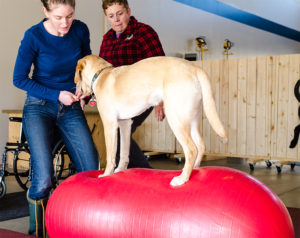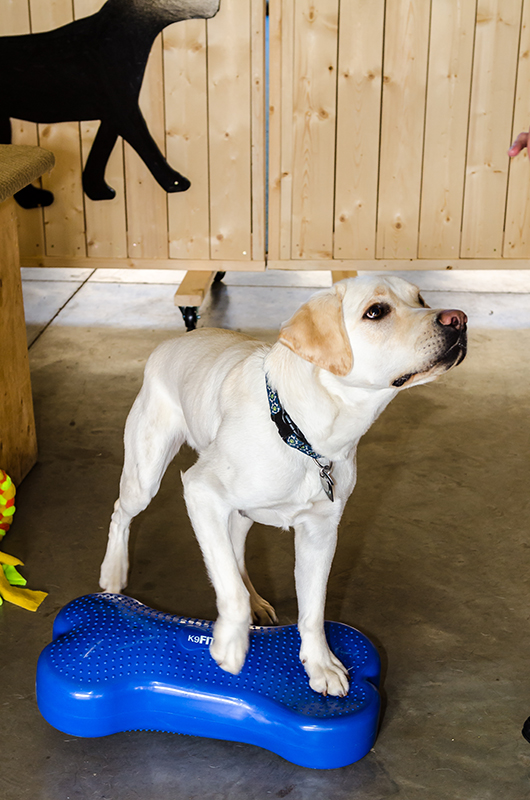 Enhancing the Education of Service Dogs Using FitPAWS® Equipment. No matter what skill service dogs have been trained for, they must attend to their person while filtering out all competing stimuli and navigating through environments that are not very dog friendly. Have you ever thought about the challenges a service dog would have to face if they accompanied you in a typical day? Imagine navigating through a busy grocery. The service dog not only has to be aware of where his body is relative to his handler, he also has to be aware of where his body is relative to any obstacles around him (the grocery cart, assistive equipment, other people, displays, and shelving).
Enhancing the Education of Service Dogs Using FitPAWS® Equipment. No matter what skill service dogs have been trained for, they must attend to their person while filtering out all competing stimuli and navigating through environments that are not very dog friendly. Have you ever thought about the challenges a service dog would have to face if they accompanied you in a typical day? Imagine navigating through a busy grocery. The service dog not only has to be aware of where his body is relative to his handler, he also has to be aware of where his body is relative to any obstacles around him (the grocery cart, assistive equipment, other people, displays, and shelving).
 Service dogs also must have the confidence and stamina to tackle different surfaces. Have you ever noticed how slippery flooring is in common areas of malls compared to flooring within stores and the differences in flooring between malls and various buildings? Besides responding to rapid changes in floor surfaces, service dogs must also be comfortable working on footing of varying stability. Elevators rarely give a smooth ride, lifts have a fair amount of wobble, and buses lurch through their routes.
Service dogs also must have the confidence and stamina to tackle different surfaces. Have you ever noticed how slippery flooring is in common areas of malls compared to flooring within stores and the differences in flooring between malls and various buildings? Besides responding to rapid changes in floor surfaces, service dogs must also be comfortable working on footing of varying stability. Elevators rarely give a smooth ride, lifts have a fair amount of wobble, and buses lurch through their routes.
Dogs With Wings, an ADI certified service dog organization in Edmonton, Alberta, providing assistance dogs, guide dogs, and autism service dogs, has started using FitPAWS® equipment to help teach service dogs to confidently tackle different surfaces, build strength, and encourage flexibility.
Since being on FitPAWS® equipment is such a novel experience, we not only have immediate feedback about a dog’s response to novelty, unstable surfaces, and surfaces of different textures, we also have feedback in the ways a dog knows how and feels comfortable using their body. For example, it is not uncommon to see dogs that at first glance may seem to lack rear end awareness, but upon closer examination, have excellent rear end awareness; however they are uncomfortable placing their hind feet on narrow or unstable surfaces. With this information, we can tweak training and conditioning programs early in a dog’s education so that we are efficiently supporting dogs in their weak areas. The more we know about our dogs, the more we can help them to be the best they can be.
Lastly, even though service dogs must work slowly and deliberately unlike the fast exciting pace seen in dog sports, developing proper conditioning and body awareness programs for these dogs is just as important. After all they are needed to function at a high level every day of their working lives.
Judith Beam is avidly involved in all things dog. When not working on finishing her degree, she can be found taking training and behaviour courses, coaching people with their dogs, and fostering an unhealthy attachment to her rottweiler, Kimbo.

